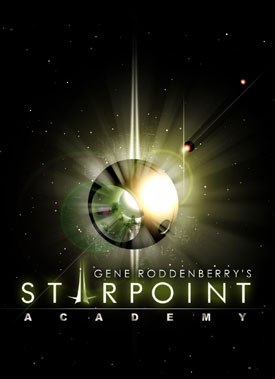Joe Strike ventures into the Newark, New Jersey home of DPS to discover how their global animation studio philosophy has helped them become a major player in such a short period of time.

© DPS.
In a little more than a year-and-a-half, a company has come out of nowhere to be a major player in the animation business. Well, not exactly nowhere; Newark, New Jersey to be more precise.
Digital Production Solutions (DPS), a 2D and 3D animation studio backed by the deep pockets of IDT the company that probably sold you the telephone calling card sitting in your wallet has, among other projects entered into a co-production with Jim Jinkins of Doug fame, acquired an unproduced pair of projects from Gene Roddenberrys estate for in-house development and. most recently, has entered into a partnership agreement with John Williams and Neil Brauns Vanguard Animation to co-produce and co-own all Vanguard properties, including features, direct-to-DVD and broadcast.
DPS has also dug into those deep pockets to acquire a controlling 51% interest in Film Roman, best known for producing The Simpsons and King of the Hill, as well as a slew of syndicated and Saturday morning properties. If youve never heard of DPS before, well, youre not alone. The company has been keeping a low profile until now, teaming up on a co-production or two while developing a proprietary approach, setting up a virtual studio overlain on its telecom backbone. DPS thinks its approach is a GAS the Global Animation Studio.
Morris Berger, IDT Medias evp of business development and president of DPS, explains the process: We developed a global protocol. Its not outsourcing its as if all these shops and animators are working together in the same building; were just using the world as our studio.
Were able to work with studios and independent animators based on different criteria: software, skill sets, pricing and so on. We can choose between freelancers sitting in their basement, small mom-and-pop shops or larger studios where there may be a few hundred guys, but only a handful that we would need on any given project. We now are in the process of aligning with major talent from around the globe.

Morris Berger, IDT Medias evp of business development and president of DPS. Photo courtesy of DPS.
GAS New Global Paradigm
As with any 3D production, each new project at DPS is broken down into digital objects: characters, backgrounds, props, locations, etc. But there the resemblance stops. DPS then digitally tags each object and puts them through a pipeline in which the software, relating to those tags, finds the absolutely best person/shop to do the task, finds the right price, predicts dependencies in the schedule, keeps perfect track of all notes and approvals on all levels, allows for aesthetic, managerial and fiscal oversight at all phases in short: manages the production so that things cost a lot less and get done faster and better.
According to Berger, From the very beginning of production, we use the protocol in a global fashion. We do just as much of the modeling and texturing of characters props and locations, even rigging, with our affiliates as we do in our hubs in Newark, Los Angeles and Israel. The real distinction is that the look and feel of the project is done in-house in order to give story-tellers/partners/creators, whether locally or over a network, the same kind of creative in-house environment and experience that they would have at Pixar, PDI or Blue Sky. We also package lots of meta-data with our digital objects to insure that our global collaboration is absolutely smoothed-out in turns of varying cultural, subjective and skill-set issues. The final stages compositing, lighting and rendering are done in our own shops to make the collaboration consistent and seamless.
From its studio in IDTs Newark headquarters, DPS has been seeking out small studios and independent 3D animators to join GAS; so far theyve recruited personnel and facilities in some 30 countries, from North America through Australia, with stops in Eastern Europe, Africa, the Middle East and Southeast Asia along the way.
Says Berger, The key to the GAS protocol is maintaining quality and control while using different shops, because anybody can outsource. With our new paradigm, we deliver a product that looks completely homegrown. Other 3D companies havent been able to do that, because they dont have the telecom infrastructure that we have.
Keeping Track of the Big Picture
GAS affiliates work in almost any software platform, since the protocol is essentially an agnostic system. Phone calls, QuickTime, model and texture file exchanges help DPS keep close tabs on its satellite studios during the course of production. Massachusetts CGI shop Anzovin Studios has worked with DPS, and producer Steve Anzovin enjoys traveling in DPS orbit: Working with DPS was a pleasure they knew what they wanted and they gave us good direction and a lot of support, which is essential when youre taking on the role of an offsite facility.
We used their production management system to keep track of the work flow and job status. The proprietary software worked really well it made the production process a lot simpler than what we have experienced with other clients systems. Everything was easy to access online and you could find out where you stood at any given moment without any hassle.
While affiliate studios track assignments via specific access levels, DPS uses it to ride herd on the Big Picture. That means not just the production assets and tracking a single job, but dependencies between jobs as well. The DPS system tracks all of those factors together with the associated resources and talent every step of the way.


DPS revs up production on Monster Monster Trucks. © DPS.
At this writing, the crew was busy tweaking the rigging and the internal bones on a slew of anthropomorphized vehicles for Monster Monster Trucks, a project DPS is co-producing with Jinkins and David Campbell of Cartoon Pizza. While the rigging and the bones allow an animator to move and emote a character, creating realistic motion on a childrens project is a secondary goal, and physics sort of go out the window. Interaction with its environment is what half the rig is about; the other half is interaction with itself.
DPS speeds up the production of character animation through a unique proprietary user interface. The interface offers scripted custom character controls that allow animators to achieve an integration of multiple gestures and movements through composite controls. The number of seconds of animation outputted per workstation increases dramatically through the use of these controls. Whats more, the controls smooth out any accidental cultural differences between animators trying to achieve an expression free of the culture-norms of the particular part of the world the animator is sitting in.
DPS has created some innovative mixes between keyframe animation and motion capture, with GAS affiliates receiving base motion-capture files generated on DPS in-house Vicon 8 Stage. Aside from the occasional kung-fu fights that sometimes occur on the stage during slow days, the DPS crew tries to blend mocaps hard-edged, realistic motion with a more stylized keyframe approach. This approach maximizes what the tool offers: the benefits of time saving via mocap while maintaining the art of keyframe animation.
From its inception, DPS goal was never to be a service provider, but a creative production company in its own right, with ownership or co-ownership of a wide variety of intellectual properties. Co-ventures with people such as Jinkins, were the first steps toward turning a low profile New Jersey CGI shop into a major player in the animation business. Everything we work on, we really believe in, says Berger, so why not have a stake in it? The beauty of our approach is that people who are great storytellers with creative vision need an outlet to do their 3D work. Its a natural fit.
DPS was recently tapped by 4Kids Entertainment to bring one of the biggest toy hits of the 80s the Cabbage Patch Kids into the CGI era with a pair of releases this year one a music video featuring Ripe Records pop sensation Jaime Lee; the other a long form active play video, probably earmarked for direct-to-DVD.

replace_caption_DPS06_starpointAcademy.jpg
Roddenberry, Film Roman, Vanguard and Beyond
But perhaps the most intriguing endeavors currently on DPS table mark another step forward in the studios ambitions. Starpoint Academy and Char created by Star Trek legend Gene Roddenberry, are intended to give the studio franchise properties that will open up even larger opportunities. The two projects Roddenberrys only works targeted specifically to children will be fully CGI-animated and fully owned by DPS. Based on its title alone, Starpoint Academy promises plenty of spaceships, zero-gravity action and energetic teen heroes. Char, the Starpoint Academy follow-up, tells the story of a normal, 22nd century all-American girl who is actually an intergalactic princess robbed of her birthright. As befits projects that are aimed at an older-kids/sci-fi fan demographic (rather than a cartoony style more suited to the Cabbage Patch Kids), Berger anticipates both Starpoint and Char will make extensive use of motion capture.
The Roddenberry projects, impressive as they were, were only the prelude to two major announcements, one of which was the Film Roman acquisition; suddenly DPS could boast of both traditional 2D and CGI 3D production facilities. Company sources promise that little if anything will change at Film Roman, with the 2D company retaining its management team and its independence. However, its probably not unreasonable to assume that DPS will be working closely with Forum Visual Effects, Film Romans in-house visual effects house guided by Kevin VanHook.
Looming just as large is the deal with Vanguard Animation to co-produce and co-own all Vanguard properties including feature film releases, direct-to-DVD and broadcast. Digital Production Solutions strategy of building a library of impressive content is in high gear, said Jim Courter, IDTs ceo. DPS now has credibility in the television industry through our new venture DPS-Film Roman, and we will find the same in feature film releases with this partnership with Vanguard. We have built credible studios for multi-platform releases.

 Hip Hop & Hamilton is one of the many unproduced projects DPS has waiting in the wings. © DPS.
Hip Hop & Hamilton is one of the many unproduced projects DPS has waiting in the wings. © DPS.
Were excited to be working with Vanguard, a company headed up by management associated with so many important and groundbreaking films, said Morris Berger, president of DPS. Vanguard and DPS complement each other. Vanguard is an entertainment industry powerhouse and DPS is continuing to build its intellectual property using innovative technology. Together, we intend to pursue animation projects with broad entertainment appeal.
DPS will work closely with Vanguard ceo and Shrek producer Williams and president Braun, who has held numerous senior executive positions with NBC, Viacom, Imagine Entertainment and HBO. Berger sums up DPS ambitions by pointing out that weve only been in business a year and a half, and were rolling on two projects of our own with a lot more in the pipeline; thats pretty good for a new company.
[Animators and facilities interested in joining GAS can learn more at www.globalanimationstudio.com; Information about the DPS studio can be found at www.digitalproductionsolutions.com, and potential Starpoint Academy fans can join the shows E-mailing list at www.starpointacademy.net]
Joe Strike is a New York City television writer/producer with a lifelong interest in animation, and who remembers watching Astro Boy when it first aired in the U.S. His work includes numerous promotional campaigns and special events programming for cable outlets including Bravo and the SCI FI Channel. He interviewed Disney animation director Mark Dindal in the November 2000 Animation World Magazine.








